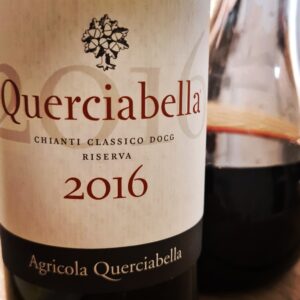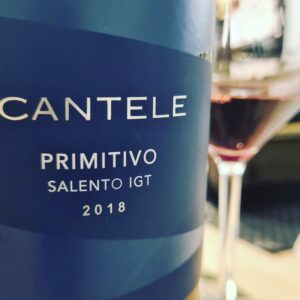norman.comfort@getcomfortable.co.uk, or talk to me on 07530 708125. Let's do this.....
A tale of two Italian wine regions!
Inspired by some intensive wine study this week, we enjoyed two Italian reds on Sunday! A Chianti Classico Riserva 2016 from the Querciabella winery and a Primitivo 2018 from The Cantele winery in Salento.
Some background
We have visited Querciabella – they are recognised as being one of Italy’s best and most innovative wine producers. The family have owned the vineyard over three generations. Current wine maker, Sebastiano has a real passion for animal rights and the preservation of the environment. In 2000 he introduced a 100% plant‑based approach to biodynamics that forbids the use of animal products in the vineyards or in the cellars.
Appellation Chianti Classico DOCG Riserva
Chanti classico is a DOCG requiring 100% of the grapes to be Sangiovese. Querciabella have a selection of the best vineyard sites in Greve, Radda and Gaiole. All the sites enjoy south facing elevations giving better sunlight. The soils in this area of Chianti are mainly sandstone rocks and sands obtained from the flaking of galestro. The higher presence of galestro slate results in wines of persistent tannins and darker fruit profiles. In Gaiole the soils have more limestone also known as Albarese which is also found in parts of Spain. This soil is richer in calcium carbonate and delivers a riper expression of the Sangiovese fruit and a marked acidity. The average yield from these vineyards is just Average Yield 30 hl/ha.
The vineyard has been completely Organic since 1988 and biodynamic since 2000. Harvesting is done entirely by hand in small 9kg crates between early September and early October. Each vineyard is picked and fermented separately in oak barrels, prior to 16 months maturation in fine to extra fine-grained oak barriques (225 l) and tonneaux barriques (500 l) of which up to 20% are from new oak
Salento IGT is one of the most commonly used IGT titles in Puglia, southern Italy. We didn’t make it that far south!! It covers the Salento, the limestone based peninsula that divides the Adriatic Sea from the Ionian Sea and forms Italy’s heel. Southern Puglia’s star performing DOCs are Primitivo di Manduria and Salice Salentino. Their core grape varieties (Primitivo, Negroamaro and Malvasia Nera) are also key in Salento IGT wines.
The Cantele Primitivo del Salento is made from 100% Primitivo grapes sourced from the Torricella area of Salento in Puglia. Harvest takes place at the end of August. Harvesting Is carried out by machine as the vines are head trained and pruned-spur cordon. Maceration lasts about a week and the fermentation takes place at around 22 – 24 degrees. Aged for approximately 6 months in oak barriques
So here’s my tasting notes for these two wines.
Let’s start with the Chianti
On the nose : pronounced violet, blossom, redcurrant, raspberry, cherry, red plum, blackcurrant, blackberry, black cherry, dill, dried herbs, liquorice, cloves, cedar, charred wood, smoke, coffee, dried raisin and fig
On the pallet : dry, high acidity, medium + tannin, ripe, soft, smooth, high alcohol, full bodied with flavour characteristics as on the nose and a long finish.
This wine is outstanding quality. The fruit flavours remain fresh and offer amazing complexity through several primary clusters (red, black, and herbal), as well as the use of oak bringing tertiary flavour characteristics and offering more depth and intensity to the wine. This Chianti has great typicity, with the grape’s high acidity perfectly integrated into the tannins and alcohol. The acidity balances the tannins, which have softened, and compliments the flavours from oak ageing, meaning the wine feels fresh, elegant, and complex all at the same time. The wines finish is long and evolving and reminds the drinker of the wine’s aroma. A truly outstanding example of Sangiovese.
Now onto the Primitivo
On the nose : medium plus with redcurrant, cherry, red plum, blackcurrant, blackberry, black cherry, cooked fruit, chocolate, liquorice, cloves, cedar, charred wood, mushroom, coffee, leather
On the pallet : dry, medium acidity, medium tannin, smooth & ripe, high alcohol, full bodied with flavour characteristics as on the nose – showing dark fruit characteristics and a medium plus finish.
This wine is very good quality. The wine has great balance between the acidity and alcohol. The fruit flavours remain fresh and have a good level of intensity exhibiting lots of dark fruit character. The use of oak has added to the wines complexity with tertiary flavour characteristics offering more depth and a smoothness to the wine. The wine’s high acidity compliments the tannins very nicely. To be an outstanding wine, the wines complexity would perhaps exhibit a wider range of fruit flavours and the finish could be longer.


